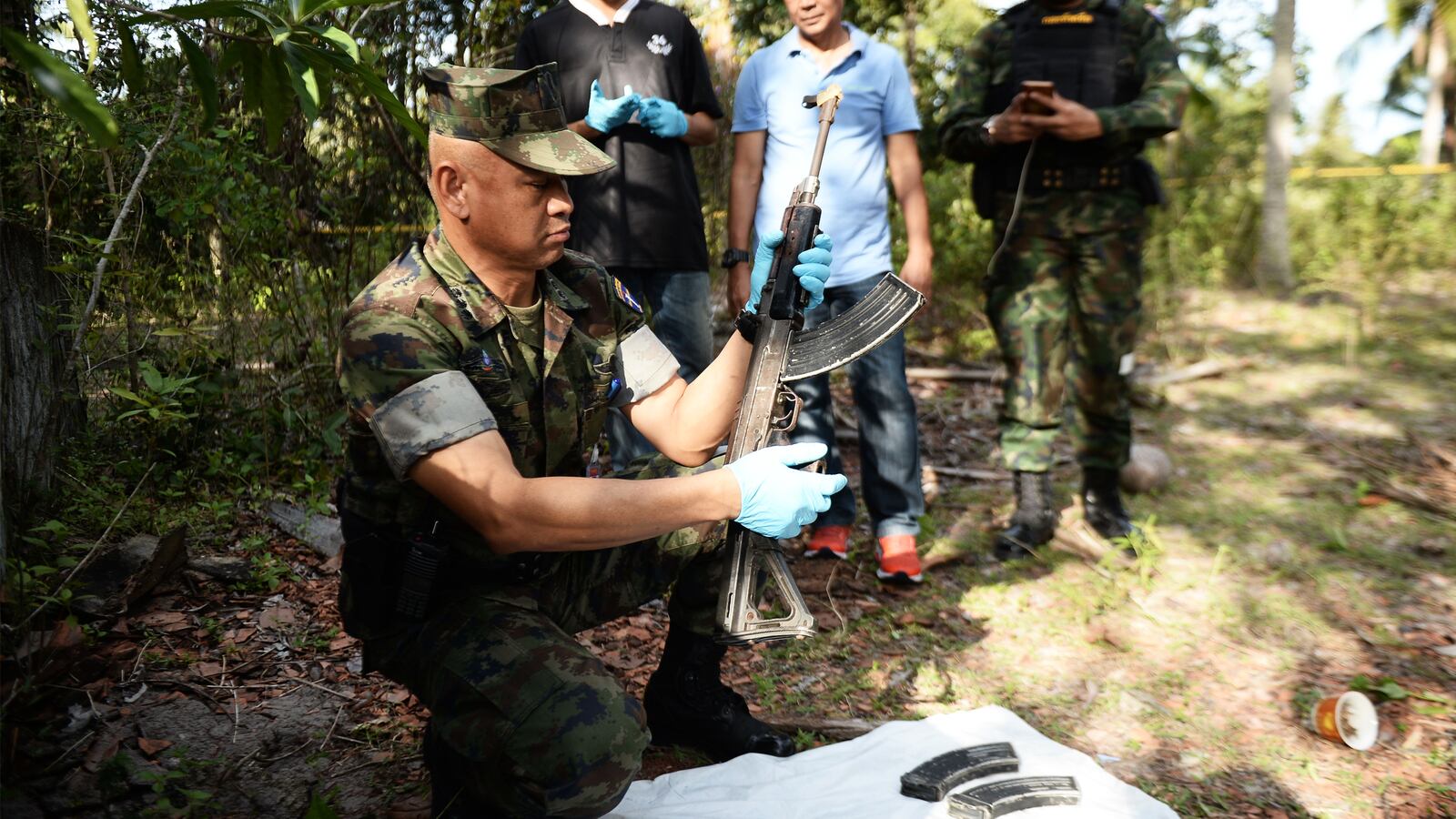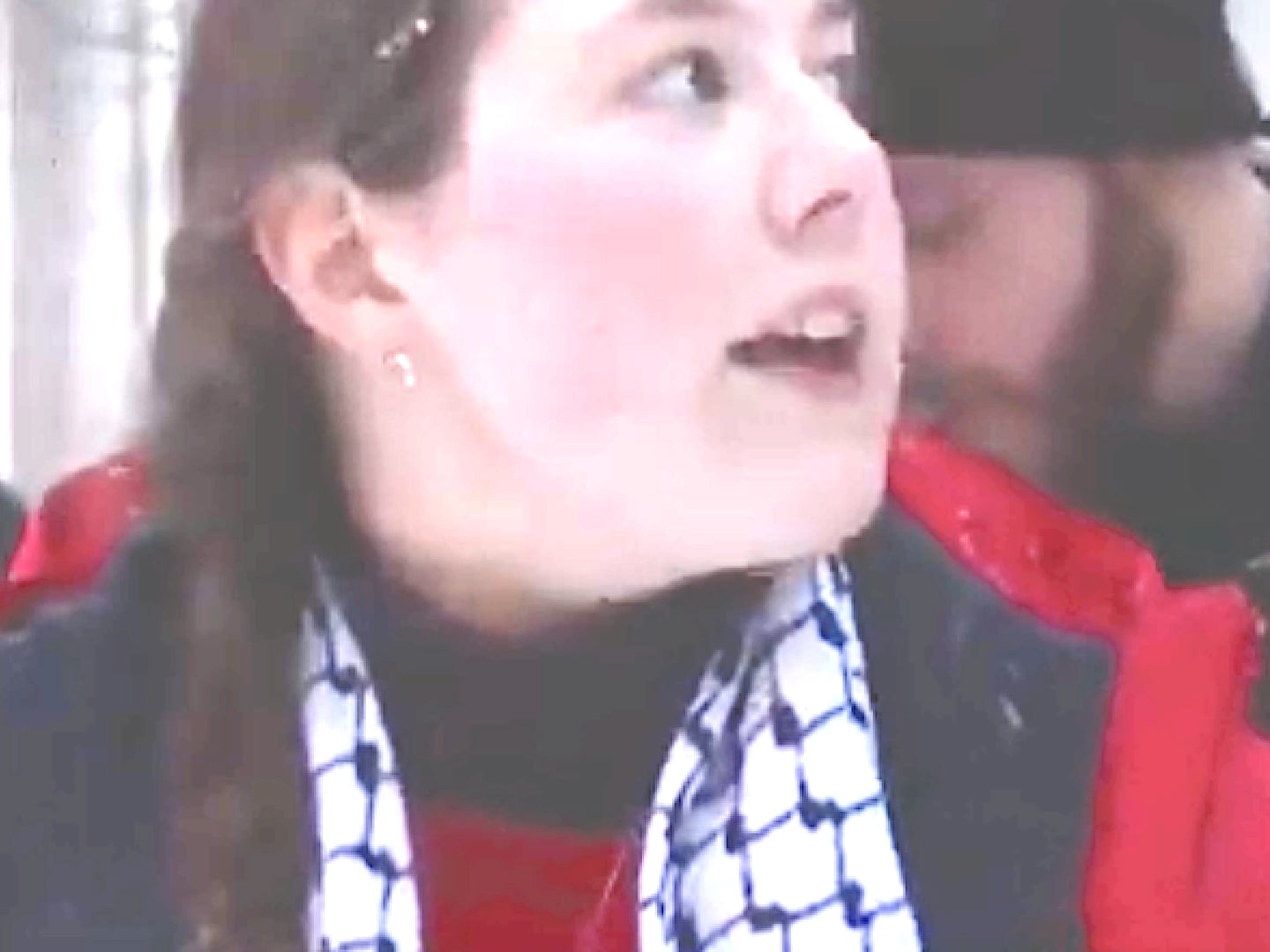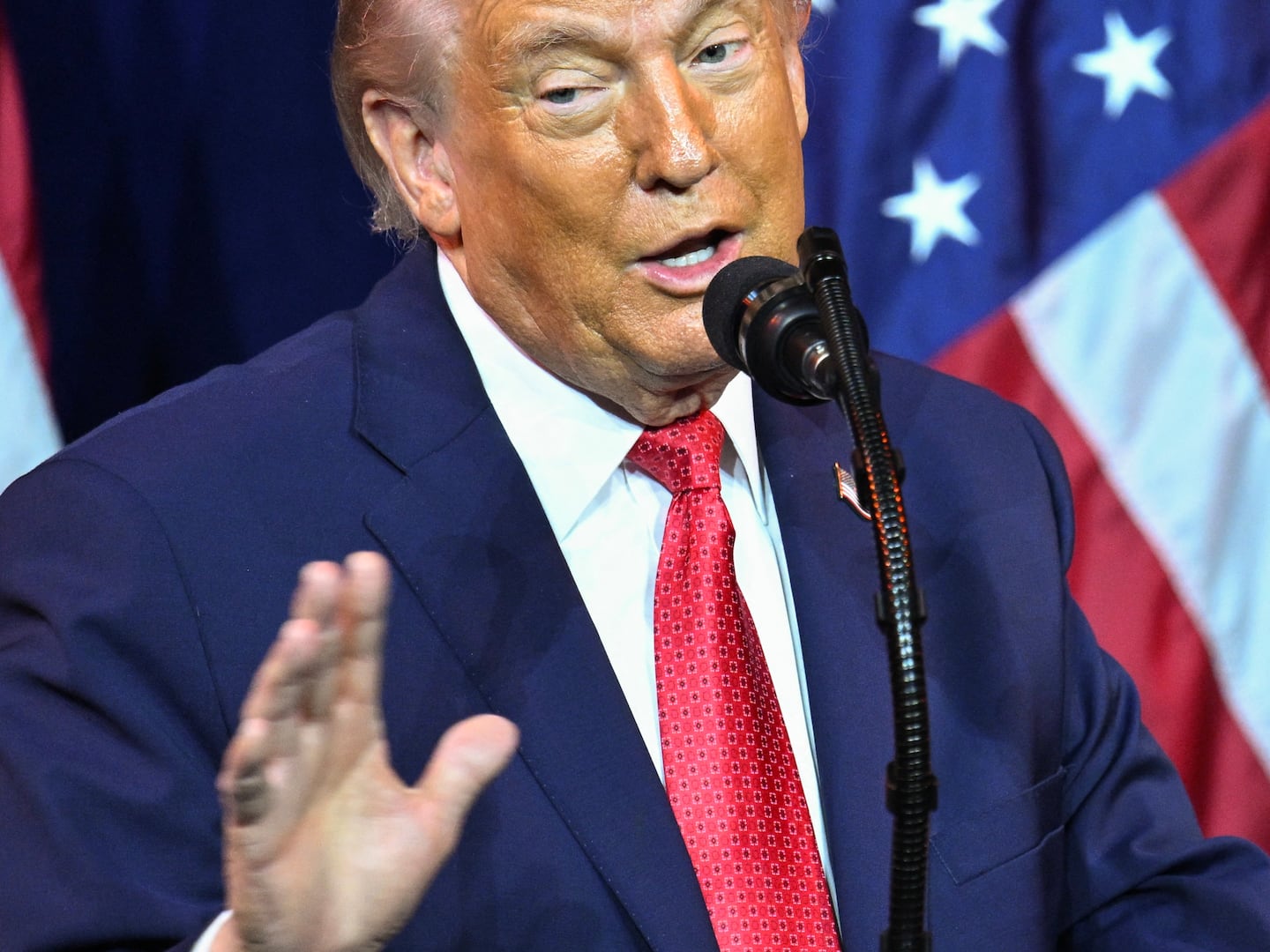The Cityline bus from Kota Bharu takes an hour and a half to cover 50 kilometers and stops with a start 50 meters from the border. Rantau Panjang is alive with activity characteristic of border towns the world over: roadside stalls sell satay and soft drinks, trucks and vans tear about with scant regard for their cargoes, two steady streams of weary humanity flow in and out of the country on either side of the road. But compared to Thailand’s other land borders, which I have come to know well over the past couple of years, this one does strike one as different. It doesn’t take long to work out why. It’s the cognitive dissonance that comes with following signs that say “Thailand” behind a row of men in white jubahs and women in full niqab. I’ve got a feeling I’m not in Kansas anymore, and certainly not on Khao San Road.
Rantau Panjang’s sister town is Sungai Kolok, the sort of place that passes, in this part of the world, for a den of sin and iniquity. It’s where Kelantan’s pious come to shrug off their piety in well-hidden bars and dubious massage parlors. “How sweet life would be,” Lawrence Osborne writes in The Wet and the Dry, “if one could, at all costs, avoid Sungai Kolok. One could grow old and happy and hale without Sungai Kolok.” Motorcycle taxis lie in wait on the other side of immigration, their owners shark-like, grinning. But as is often the case in places such as these, where a dearth of tourists has paradoxically inculcated a laissez faire attitude towards their custom, a mere shake of the head is enough to dissuade the men, and is perhaps even welcomed as a convenient excuse to retreat into reverie and one another’s cigarettes.
My room at the Genting Hotel is a step up from my room in Kota Bharu, at least until my eyes adjust to the light. There are strange marks on the carpet, like phlegm hacked up 20 years ago or more, and earwigs in the bedsheets. I have a vague suspicion that the signs prohibiting durian in the rooms haven’t been all that strictly obeyed. After a quick nap in the air-conditioning with my six-legged bedfellows, the smell of the aforementioned fruit assaulting my nostrils, I shower and strike out into the town.
The thing one needs to realize about southern Thailand and the ongoing insurgency here is that it’s not an exclusively religious affair. Since violence first increased in the region at the beginning of the century, it has remained a primarily ethno-nationalist one. The states of Narathiwat, Pattani and Yala all sport Malay Muslim majorities, but it remains their long and intractable historical ties to the Sultanate of Pattani that matter most here. Pattani’s relationship with the Buddhist Kingdom of Siam was rarely if ever very cordial, and matters only got worse after the region was formally annexed by Thailand following the Anglo-Siamese treaty of 1909.
Forced assimilation was the order of the day: “Thai-ness” and centralization were the goals. In the late 1940s, Haji Sulong, the founder of the Pattani People's Movement, launched a campaign to demand autonomy, language, and cultural rights in the south, including the right to practice Islamic law. He went all-too-conveniently missing under mysterious circumstances in 1954. By then, the insurgency was already in its infancy, and though Bangkok had given up on assimilation by the 1980s, the militants never quite gave up on independence. In 2004, by which point it had become convenient for the capital to characterize the insurgency as its own little front of the global war on terror, the violence exploded. Martial law was instituted in the deep south that year. Nearly 7,000 people have been killed, and nearly 12,000 injured, since.
But Bangkok’s characterization of the conflict has never sat quite right with the analysts. In November last year, the International Crisis Group published an enlightening report, Jihadism in Southern Thailand: A Phantom Menace, which made the argument that Islam isn't the driving force behind the insurgency at all. The report bears quoting at length:
Al-Qaeda and ISIS have exploited protracted conflicts across the Muslim world to further their agendas, including in areas that are under the sovereignty of capable states but where central government authority is weak. […] Yet such patterns of involvement with ISIS or other jihadist groups to date have not manifested themselves in southernmost Thailand. […] [T]hose Malay Muslims motivated by desires for comradeship, identity or devotion to a cause—not to mention grievances against the Thai state—appear more likely to be absorbed by the Patani liberation movement, given its roots in local society, than by transnational jihadist groups.
I’m trying to keep this report in mind as I stroll around the town: the alternative is to give primacy of place to Osborne’s excoriation of the place, or to the Sydney Morning Herald’s Lindsay Murdoch, whose otherwise excellent 2015 report largely focused on the Islamist aspects of the conflict. “Fears are growing that insurgents, who have shunned attempts to align themselves with Islamist terrorist organizations like al-Qaeda and Jemaah Islamiyah, are looking to expand their sphere of influence and could be ripe for recruitment by transnational militant groups such as Islamic State,” Murdoch wrote at the time. “Analysts say that while Malay-Muslim nationalism and identity lies at the heart of the insurgents’ cause, their struggle is often couched in religious language and practices.”
Of course, there is no doubt that the conflict’s religious element is real, as is the threat that it may grow in importance with time. Political Islam—as opposed to everyday religious practice—is more than anything opportunistic in nature. In Chechnya, Kashmir, Kosovo and elsewhere, political Islamists continue to prove themselves more than adept at taking nationalist struggles and rewiring them from the inside, especially when those struggles are long-running, and a sense of hopelessness an inevitable by-product of their length. But while atrocities like beheadings are not unheard of in southern Thailand, they’re not exactly common, either, and other Islamist go-tos, like suicide bombings, are yet to become go-tos here. Fighting for martyrdom and paradise is one thing. Fighting for freedom—an independence you will only be able to enjoy if you’re alive to do so—is, rather tellingly, another.
But Sungai Kolok remains on edge. The front yard of the Genting is littered with concrete road blocks, the better to prevent car bombs from ploughing into the lobby, and the streets leading into the city center are similarly laced with checkpoints and their keepers. It’s a novelty to be seen as a novelty in Southeast Asia and I can’t help but take pleasure at the looks I’m getting. They’re not hostile so much as deeply confused, and when not confused then knowing, amused. Journalists and disaster tourists—in my case both—are the only people who stick around in Sungai Kolok for more than an hour or two. I follow Prachawiwat Road around to the city’s edge as the sun goes down, plunging through the city and its dimly-lit streets, until I find Moonshadow, a place that, mercifully, appears to serve beer. I eat dinner there, the only person in the restaurant, and then wander back past another bar, which was blown up a couple of years back. Whether it was one of the ones blown up in 2005, or one of the ones blown up in 2015, I can no longer recall. Maybe it was blown up both times: bars have long been a favored target of the insurgents. I think about taking money out at an ATM, but decide against it: these are also favored targets. The most recent spate of bombings to hit Sungai Kolok took place in April 2018: at least 12 people were injured during the city’s food festival, which, frankly, I’m amazed it even holds. For someone like me, who cowers at the sound of a car backfiring, it is always impressive how people manage to enjoy themselves—or at least try to do so—in some of the world’s most trying places.
I wait a while in the restaurant of the Genting, where Malaysian families eat massive meals and indulge in some characteristically terrible karaoke—for a moment, it seems that the only thing to worry about is the possibility of a high note—until the evening disco is scheduled to begin on the third floor.
This is a rather curious affair, a mix between traditional performance, cover band show, and, again, karaoke night. For a while, I appear to be the only patron: a sad, lonesome Westerner cradling a bottle of Chang on his own. Eventually, however, other customers appear, all of them Malaysian. One of them is a young Malay ladyboy.
“I moved here because it was dangerous for me to be a ladyboy in Kelantan,” he tells me. His Thai boyfriend, sitting alongside him, nods and squeezes his lover’s hand.
“What about being gay?” I ask.
“Impossible there,” he says.
I ask how much easier things are on this side of the border.
“It is still difficult,” he says. “Thailand’s Muslims don’t like ladyboys, either. But at least it is legal here, you know? They just don’t like it very much.”
We wander in to see the show. Eventually, gingerly, people take to the dance floor. A middle-aged prostitute from Bangkok walks over and joins me at my table near the wall.
“You want anything, darling?” she croons in my ear.
I tell her that I’m fine and flash her the old wedding ring. Unfortunately for both of us, however, most of the Malay men are here with wives or girlfriends, and she doubles down on her efforts until she at least gets me up and dancing to a song or two.
But she’s becoming more desperate now, clawing me a little too forcefully. I tell her again that I don’t want anything and she all but begins to beg. “There is no work here for me,” she says. “You don’t understand.”
I ask her why she doesn’t go elsewhere—to Pattaya, say, where she’d probably wind up overworked—and she says she thought there would be more work in Sungai Kolok than there is. I don’t exactly envy her. Unable to ply her trade on the street, she instead has to do so in the darkened discos and massage parlors of hotels that haven’t earned their three stars. But I eventually have to become insistent: I’m not going to be taking her to my room. Aside from any other considerations, I have to be up early in the morning.
I have to be up early to catch a taxi bus to Narathiwat, the capital of the province of the same name, where police checkpoints are regularly shot up, most recently last week, or else attacked with motorcycle bombs.
I am joined on the bus by a fully veiled woman and her child, and a young Pakistani man, Farhad, who is interested to know what on earth I'm doing here. I tell him the usual story: that I’m a tourist, that I like out-of-the-way places. Farhad is here to visit his brother, who he says is studying in the city.
I am interested to talk about Narathiwat and how safe it is for outsiders like us. Farhad laughs. He’s been there plenty of times, he says, and has never had a problem. Of course, he’s a Muslim, and I’m not, though he still doesn’t think I have anything to worry about. This is always the way: a region’s reputation precedes it, filling the excitable visitor with dread, though the chances of anything actually happening to him while he’s there remain decidedly slim.
Farhad has questions for me as well. He wants to know why Muslims are having such a hard time getting into Australia, why my country locks children up on South Pacific islands.
I tell him the truth: Australia, generally speaking, is a racist country. Maybe not everyone, I say, and maybe not everywhere, but definitely in general. We have the mentality of islanders, I tell him, even though our “island” is a continent. He nods, seemingly satisfied by my answer.
“You shouldn’t start wars with Muslims,” he says. “Wars with Muslims never end well.”
“No,” I say. “They don’t, do they?”
The woman in the veil gets out somewhere on the edge of city, seemingly pleased to be getting away from us both, especially the infidel. Farhad shakes my hand at the bus stand.
“It’s a very lovely city,” he tells me. “I think you’ll like it.”
In fact, I won’t really get to see it. I’m shacking up in another Osborne suggestion, this one the Imperial Narathiwat, and though the locals setting up market stalls across Phichit Bamrung Road seem happy to brave the inclement weather, I am not, and sit reading in my room instead, waiting for the clouds to grow ever heavier. You can feel it coming, some dark change in the air. A warm rain, it seems, is going to fall.
Part I of the series can be found here. Parts III and IV will be published in the next two days.






